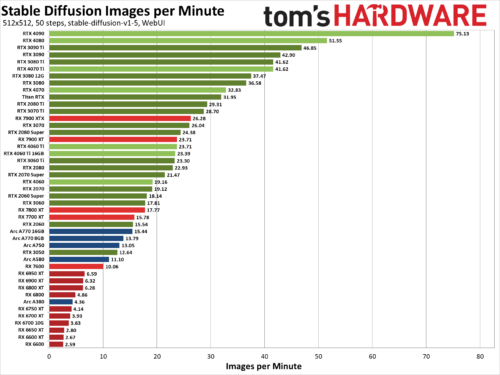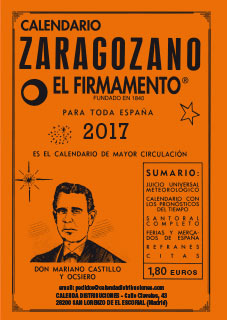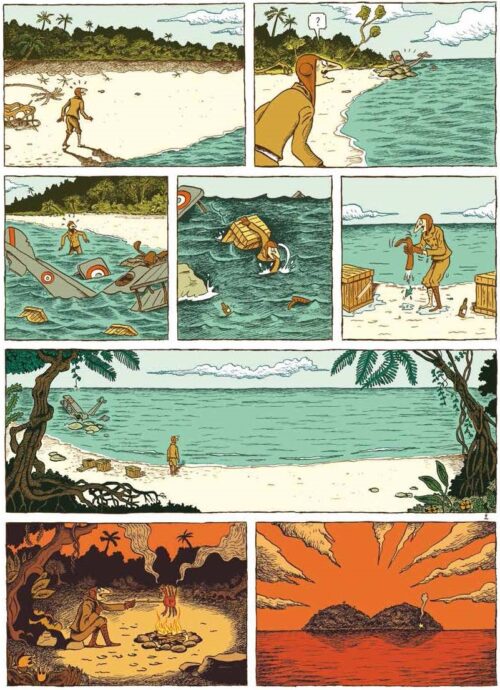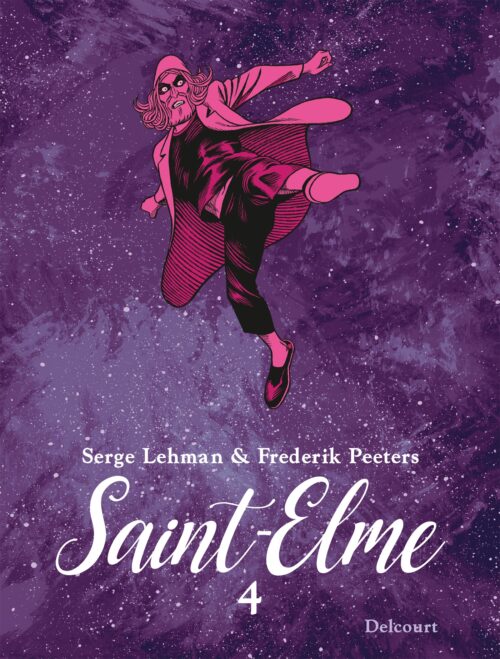Estimate My App


A hedge fund is an investment fund where capital from various institutional and individual investors is combined and put toward a range of assets, including derivatives, stocks, bonds, commodities and foreign currencies, with the aim of optimizing returns.
Hedge funds, in general, operate as limited partnerships, professionally managed by fund managers who pool money from investors. However, participation in hedge funds, including those dealing with cryptocurrencies, is typically limited to high-net-worth individuals who can bear higher management fees and associated risks.
Crypto hedge funds generate revenue through an annual management fee, typically ranging from 1% to 4% of the invested amount. In addition, investors may also be obligated to pay a percentage of earned profits as performance fees to the managing team.
Crypto hedge funds employ a combination of systematic and discretionary investment strategies to effectively navigate the crypto landscape. The systematic approach relies on computer transaction processing models, offering a structured framework, reducing emotional influences and providing consistency. However, the risk lies in the potential vulnerability of these algorithms to unforeseen market conditions.
L’équipe des Imaginations Fertiles vous partage sa boîte à outils !
Retrouvez ici des documents vierges & disponibles pour vous aider dans le développement de votre projet.
Vous montez un tiers-lieu ? Vous questionnez vos usagers ? Vous animez des temps d’intelligence collective ? Vous souhaitez découvrir le design de service ?
L’équipe des Imaginations Fertiles peut vous accompagner dans vos projets, n’hésitez pas à nous faire part de vos besoins !
Outils et ressources pour les tiers-lieux qui développent une offre de formation professionnelle
PiNG est une structure aux mutliples facettes. À la fois association d’éducation populaire ressource sur les cultures numériques à l’échelle régionale et nationale; animatrice de deux tiers-lieux à Nantes (l’atelier partagé du Breil et le fablab Plateforme C), et organisme de formation, depuis plusieurs années.
C’est au croisement de ces facettes que cet article ressource va se concentrer, dans la perspective de fournir aux tiers-lieux en Pays de la Loire et à l’échelle nationale, un retour d’expérience orienté « opérationnel » sur des outils et des astuces permettant de développer une offre de formation ayant vocation à s’inscrire en conformité des exigences du référentiel national qualité en matière de formation professionnelle. En bref, si le mot « qualiopi » vous est familier, vous êtes au bon endroit pour glaner quelques ressources contexualisées avec une activité de tiers-lieu!

The Beatles: Get Back is a documentary television series directed and produced by Peter Jackson. It covers the making of the Beatles’ 1970 album Let It Be (which had the working title of Get Back) and draws largely from unused footage and audio material originally captured for and recycled original footage from the 1970 documentary of the album by Michael Lindsay-Hogg. The docuseries has a total runtime of nearly eight hours, consisting of three episodes, each of duration between two and three hours covering about one week each, together covering 21 days of studio time.

George Lucas began developing a Han Solo prequel in 2012 and commissioned Lawrence Kasdan to write the screenplay. After Lucas sold Lucasfilm to The Walt Disney Company in 2012, Kasdan was hired to write Star Wars: The Force Awakens (2015), leaving his son Jonathan to complete the Solo script. Principal photography began in January 2017 at Pinewood Studios, with directors Phil Lord and Christopher Miller. Both were fired in June 2017 following creative differences with Lucasfilm, and Howard was hired as their replacement. Solo is one of the most expensive films ever made, with a budget of at least $275 million.

The series explores themes related to free will and determinism, as well as Silicon Valley.
I love the WordPress Rest API and switching more and more from theme development to a headless WP approach, with an nice front-end framework. Right now I’m favoring Nuxt.js, which is build on Vue.js (check out wuxt, my very own dockerized nuxt/wp development environment).
For using WPs full strength with the Rest API I’ve collected/build a useful snippet library with WordPress Rest API extensions. I’ll try to maintain the following list as development goes on. All of the following extensions can be embedded in the functions.php file. If you wondering about the wuxt_ prefix, I’ve got the code from my Wuxt project and the prefix is as good as anyone.
Ordering posts by menu_order doesn’t work out of the box with the WP REST API. To enable this you need to add a filter to rest_{post_type}_collection_params for each post type you want to order by menu_order.
Detecting the Safari browser: The user-agent of the Safari browser is “Safari”. This value is passed to indexOf() method to detect this value in the user-agent string. One additional check is required in the case of the Safari browser as the user-agent of the Chrome browser also includes the Safari browser’s user-agent. If both the user-agents of Chrome and Safari are in the user-agent, it means that the browser is Chrome, and hence the Safari browser value is discarded.
When considering using the user agent string to detect which browser is being used, your first step is to try to avoid it if possible. Start by trying to identify why you want to do it.
interact.js takes a slightly different approach compared to most drag and drop libraries. To give you as much control as possible, it tries to provide a simple, flexible API that gives you all the pointer event data you’ll need to move elements around.
The library doesn’t even do any moving at all! This is great because you decide exactly what feedback your users get. You can drag elements, draw on a canvas or (if you really need to) scroll the page.
A vanilla JavaScript library to create a draggable & resizable dialog popup without any frameworks or libraries (e.g. jQuery UI).
To move, drag from the title bar of the dialog box.
To resize, drag from any edge or any corner of the dialog box.
Technically they’re all machine learning models, but checkpoints are usually referred to just as models. All models are static, meaning they only know what they were trained on. In order for them to learn something new, they have to be (re)trained again, also known as finetuning.
Their differences in very rough terms:
Checkpoints are the big models that make images on their own.
Loras and all their variations like Lycoris are « mini models » that plug into a checkpoint and alter their outputs. They let checkpoints make styles, characters and concepts that the base checkpoint they’re used on doesn’t know or didn’t know very well.
Hypernetworks are an older and not as good implementation of the same paper and same concept as Loras.
Textual Inversions are sort of bookmarks or compilations of what a model already knows, they don’t necessarily teach something new but rearrange stuff that a model already knows in a way that it didn’t know how to arrange by itself.
SD 1.x, SD 2.x and SDXL are both different base checkpoints and also different model architectures. Think of them maybe as non backwards compatible consoles if that’s easier to understand. SD 1.5 is say both the NES itself but also one game for it. All SD 1.x based models are compatible with SD 1.x Loras and models for extensions like ControlNet. SD 2.X is the SNES, it’s a different architecture so 1.x models won’t be compatible with it, same for SDXL if you say that’s like the N64.
ControlNet models are also machine learning models that inject into the Stable Diffusion process and control the denoising process, they’re used with an image made by preprocessor. That image is be used to guide and control that denoising process, also hence the name.
All these models come in safetensors format. Safetensors is the standard for machine learning models, since they only contain the necessary data for diffusion, hence their name. .ckpt is the old model format that’s outdated, because it’s an unsafe format that can contain and execute malicious code.
Pruned models are models that have unnecessary weights and data removed. Weights are part of what the model learned in order to denoise noise to make an image. Say a model has a weight for alien = 0.00000000000000000001, it’s so minimal that it won’t do anything, but it’s still taking up space. Now multiply that for a lot of more useless weights, pruning removes all of them so only the relevant data is left.
FP16 models are smaller than FP32 models because they have lower precision, it’s basically like calculating pi with less numbers, you’ll get close enough results, almost exactly the same in most cases, but still not as precise. Yet the images from FP16 models are also not that different or worse, and A1111 converts models to FP16 by default when loading them anyway, for faster speed.
To use a model, place them in their specific folder inside the UI you’re using. For A1111 they go in stable-diffusion-webui\models in self explanatory folders for Lora, etc. and in stable-diffusion-webui\models\Stable-diffusion for checkpoints.
Both checkpoints and Loras can be used either for poses or for styles, depending on what they were trained on. Pose Loras are a thing for example.
The reason for your results is because you’re using SD 1.5 as a checkpoint. The base SD 1.5 checkpoint is almost a year old and the Lora you’re using was trained using not only newer checkpoints, but also checkpoints trained better on anime. I recommend a newer anime checkpoint for the image you’re trying to make. The base model field on Civitai models is really more like base architecture. Also it’s recommended to not go below 512 in resolution for SD 1.x models and not below 1024 for SDXL models.

We’ve benchmarked Stable Diffusion, a popular AI image generator, on the 45 of the latest Nvidia, AMD, and Intel GPUs to see how they stack up. We’ve been poking at Stable Diffusion for over a year now, and while earlier iterations were more difficult to get running — never mind running well — things have improved substantially. Not all AI projects have received the same level of effort as Stable Diffusion, but this should at least provide a fairly insightful look at what the various GPU architectures can manage with AI workloads given proper tuning and effort.
The easiest way to get Stable Diffusion running is via the Automatic1111 webui project. Except, that’s not the full story. Getting things to run on Nvidia GPUs is as simple as downloading, extracting, and running the contents of a single Zip file. But there are still additional steps required to extract improved performance, using the latest TensorRT extensions. Instructions are at that link, and we’ve previous tested Stable Diffusion TensorRT performance against the base model without tuning if you want to see how things have improved over time. Now we’re adding results from all the RTX GPUs, from the RTX 2060 all the way up to the RTX 4090, using the TensorRT optimizations.
For AMD and Intel GPUs, there are forks of the A1111 webui available that focus on DirectML and OpenVINO, respectively. We used these webui OpenVINO instructions to get Arc GPUs running, and these webui DirectML instructions for AMD GPUs. Our understanding, incidentally, is that all three companies have worked with the community in order to tune and improve performance and features.

El calendario Zaragozano es una publicación anual española que incluye una predicción meteorológica-astronómica no científica del tiempo para un año. El contenido del pequeño calendario viene indicado por el siguiente subtítulo: “Juicio universal meteorológico, calendario con los pronósticos del tiempo, santoral completo y ferias y mercados de España”.
Physics has empiricism. If your physical theory doesn’t make a testable prediction, physicists will make fun of you. Those that do make a prediction are tested and adopted or refuted based on the evidence. Physics is trying to describe things that exist in the physical universe, so physicists have the luxury of just looking at stuff and seeing how it behaves.
Mathematics has rigor. If your mathematical claim can’t be broken down into the language of first order logic or a similar system with clearly defined axioms, mathematicians will make fun of you. Those that can be broken down into their fundamentals are then verified step by step, with no opportunity for sloppy thinking to creep in. Mathematics deals with ontologically simple entities, so it has no need to rely on human intuition or fuzzy high-level concepts in language.
Philosophy has neither of these advantages. That doesn’t mean it’s unimportant; on the contrary, philosophy is what created science in the first place! But without any way of grounding itself in reality, it’s easy for an unscrupulous philosopher to go off the rails. As a result, much of philosophy ends up being people finding justifications for what they already wanted to believe anyway, rather than any serious attempt to derive new knowledge from first principles. (Notice how broad the spread of disagreement is among philosophers on basically every aspect of their field, compared to mathematicians and physicists.)
This is not a big deal when philosophy is a purely academic exercise, but it becomes a problem when people are turning to philosophers for practical advice. In the field of artificial intelligence, things are moving quickly, and people want guidance about what’s to come. Should we consider AI to be a moral patient? Does moral realism imply that advanced AI will automatically prioritize humans’ best interests, or does the is-ought problem prevent that? What do concepts like « intelligence » and « values » actually mean?
Sobre la Gestión del conocimiento en las organizaciones:
Las tres leyes de la dinámica del conocimiento (Debra Amidon)
1. Cuando se comparte conocimiento, este se multiplica.
2. El valor se crea cuando el conocimiento se mueve desde un punto de origen a otro punto en el que existe una oportunidad o necesidad.
3. El apoyo mutuo con conocimiento proporciona la utilización óptima de los recursos, tanto tangibles como intangibles.
Herramientas citadas:
https://alternativeto.net/
https://www.zotero.org/
https://www.lesbonscomptes.com/recoll/pages/index-recoll.html
https://calibre-ebook.com/
https://gephi.org/users/download/
https://en.wikipedia.org/wiki/Zettelkasten
https://maadix.net/en/
https://latempesta.cc/es.html
Carlo Padial y Kike G de la Riva explicando mejor que nadie a donde viene y a donde va Internet
https://www.youtube.com/watch?v=c7dylxtVma4

Un piloto de acrobacias deseado por todas las mujeres, un pervertido incombustible, un aviador francés en plena I Guerra Mundial y un pobre diablo abatido y naufragado en una isla « aparentemente » desierta…A partir de aquí, este cómic dará un vuelco a todo lo creíais que era…

macos-guest-virtualbox.sh is a Bash script that creates a macOS virtual machine guest on VirtualBox with unmodified macOS installation files downloaded directly from Apple servers.
A default install only requires the user to sit patiently and, less than ten times, press enter when prompted by the script, without interacting with the virtual machine.
Tested on bash and zsh on Cygwin. Works on macOS, CentOS 7, and Windows on x86 CPUs with VT-x or AMD-V. Should work on most modern Linux distros.
macOS Catalina (10.15), Mojave (10.14), and High Sierra (10.13) currently supported.

Watch the seeds of Anakin Skywalker’s transformation take root in Star Wars: Episode II – Attack of the Clones. Ten years after the invasion of Naboo, the galaxy is on the brink of civil war. Under the leadership of a renegade Jedi named Count Dooku, thousands of solar systems threaten to break away from the Galactic Republic. When an assassination attempt is made on Senator Padmé Amidala, the former Queen of Naboo, twenty-year-old Jedi apprentice Anakin Skywalker is assigned to protect her. In the course of his mission, Anakin discovers his love for Padmé as well as his own darker side. Soon, Anakin, Padmé, and Obi-Wan Kenobi are drawn into the heart of the Separatist movement and the beginning of the Clone Wars.

Toni Segarra está considerado como el mejor creativo publicitario español del XX. Creador de anuncios cómo el de “Te gusta conducir” de BMW, “Bienvenido a la república independiente de tu casa” de Ikea o el de “¿A qué huelen las nubes?” de Evax. Durante su carrera ha ganado 39 leones en el Festival de Cannes y más de 100 soles en el Festival de San Sebastián. Ha trabajado en muchas agencias de publicidad como Vizeversa o Contrapunto y después montó la suya SCPF con varios amigos. La dejo en 2017 y decidió fundar Alegre Roca para ganar libertad y poder hacerse un poco más freelance.
Developers most commonly use display: none to hide the content on the page. Unfortunately, this way of hiding content isn’t bulletproof because now that content is now “inaccessible” to screen readers. It’s tempting to use it, but especially in cases where something is only meant to be visually hidden, don’t reach for it.

Gregor Mazur et son entourage débarquent à Saint-Elme pour l’enterrement de Roland Sax. Quatrième tome spectral de la saga de Lehman et Peeters.
La mort de Roland Sax crée des remous : Gregor Mazur et son entourage débarquent à Saint-Elme pour assister à l’enterrement. À la Vache Brûlée, Franck se remet de ses blessures et tente de convaincre Philippe de rester en ville malgré le danger. Stan et Yérim font un tour en boîte de nuit. Yves Mertens cherche une maison à louer. Et Piotr est touché par la grâce.
Sam Altman – the executive behind ChatGPT – has scanned the irises of more than two million people with a metal sphere, to prove that they’re human.
The process is simple: you install an application on your mobile phone and receive a QR code. Then, you must allow a metallic sphere to look at you with its eye and generate a “personality test.” The proof is then associated with the QR code and the app becomes a passport called World ID. This also acts as a digital wallet for a cryptocurrency called Worldcoin.
Many shopping centers are already offering this service. But the question is: why would anyone want to submit this personal information?
en el caso de que se estén empleando plugins para el desarrollo de una solución WordPress que no sean compatibles con WPML, por ejemplo PODS, una solución interesante, es duplicar el mismo post o tipo de contenido, que ha sido creado con elementos del plugin incompatible y aprovechar cada versión para cada uno de los idiomas que hemos configurado para nuestro sitio, diferenciando cada post con una nomenclatura, por ejemplo con el diminutivo (_en, _es, _fr) del idioma en el slug o (-EN, -ES, -FR) en el nombre del mismo.
Para que luego WordPress distnga cual de esos bloques o contenidos pertenece al idioma concreto, utilizamos la constante ICL_LANGUAGE_CODE, definida por WPML, que se pueden emplear como parte del nuestro tema, para poder invocar el contenido de un post u otro en dependencia del idioma actual con el que se está navegando en nuestro sitio, idioma almacenado en la constante antes mencionada.
De esta manera un ejemplo podría ser:
if (ICL_LANGUAGE_CODE == 'en')
We can cycle through the reproduction modes by pressing the m key. The modes define the range of song which are considered in the library view. When using the all from library mode, all the song in the library will be considered. In the artist from library mode the player will consider only the songs in the library which belongs to the same artist of the song which is currently playing. Finally, in the album from library mode, the player will only consider the songs belonging to the same album of the one currently in reproduction.
If the C function is active, as in our case, when cmus finishes reproducing the currently playing song, it will automatically start playing the next one in the list. To toggle this functionality we must press shift+c.
If the R function is active cmus will start again reproducing the group of songs we selected once it reaches the end of the list. For example, if we are using the artist from library mode, once all the songs of the artist are played, the player will start reproducing the artist’s collection from the start. For this function to be effective the C function must also be active. When the S function is active, the player is in shuffle mode, so it will choose random tracks from the library.
When the F function is active the player will always automatically select the current playing song on the list. To be more clear, suppose we have the C function enabled: when the player finishes playing the currently selected song it will start playing the next in the list, but, by default, it will not “select” it (it will not highlight it with the “selection bar”). When the F function is enabled, instead, the two things will always be in sync, and the song currently in reproduction will always be selected automatically.
They use the term « open source » incorrectly and provide design files that are a mix of open source licensed files along with other design files that are under a restrictive license.
OpenDesk.cc has also started restricting access to their design files so that they are only given out by request.
I have collected a list of their designs here, with notes indicating whether they fall under a free/libre license. A local copy of the free/libre design files are provided for convenience here.
¿De dónde sale el apodo de “Animal”?
En mi tercer concierto con los Enemigos íbamos de Zaragoza a Alicante y llegábamos tarde… muy tarde, como pasaba por aquel entonces, era el año 89. Íbamos en la furgoneta, entramos por las calles de Alicante para llegar al garito donde íbamos a tocar y de repente llegamos a una calle muy estrecha de sentido único. Había un R5 aparcado con el culo muy despegado de la acera y no cabíamos, la furgoneta no pasaba, no había forma… El road manager pitando y pitando y allí no salía nadie, y nosotros con una prisa que no veas, agobiados. Total que dije: “yo lo aparto…” me bajé de la furgoneta, cogí el coche por la parte trasera y apoyando la espalda en el cristal con las manos por el paso de rueda de atrás lo llevanté y lo metí en su sitio. Hay que decir que eso lleva una técnica… yo tenía un R5 y solía hacer eso cuando me quedaba mal aparcado, con lo cual ya sabía como hacerlo; no fue cosa del momento. Cuando entré en la furgoneta todos estaban callados mirándome, petrificados de lo que acababan de ver. Llegamos a tiempo a la sala, tocamos y todo salió bien. El viernes siguiente a aquella actuación, creo que fue, hicimos el programa ‘Música Golfa’ de Paco Pérez Bryan de TVE. Nos presentaba él mismo y Paco estaba hablando con Josele sobre el nuevo disco, la nueva incorporación que era el batería y le preguntó como se llamaba… y Josele le dijo: “Animal”. Curiosamente “Animal” era el apodo de un fotógrafo barbudo, con gafas y pelo largo que salía en la serie ‘Lou Grant’ de los años 80 y a mí aquel apodo me encantaba. Pero claro, el problema es que los apodos no los eliges tú, te los ponen logicamente… resulta que años después estoy tocando con Los Enemigos y Josele me presenta en pleno concierto como “Animal” así que a partir de ahí fui “Animal” y lo sigo siendo…
This project is for the collaborative effort to build a compelling event management application using open source tools such as WordPress and BuddyPress and the grit sweat and love of the community, for the community.
We’re creating the very network features we need to host events and gather well.
const TagCloud = require('TagCloud');
const container = '.tagcloud';
const texts = [
'3D', 'TagCloud', 'JavaScript',
'CSS3', 'Animation', 'Interactive',
'Mouse', 'Rolling', 'Sphere',
'6KB', 'v2.x',
];
const options = {};
TagCloud(container, texts, options);
The json() method of the Response interface takes a Response stream and reads it to completion. It returns a promise which resolves with the result of parsing the body text as JSON.
const myList = document.querySelector("ul");
const myRequest = new Request("products.json");
fetch(myRequest)
.then((response) => response.json())
.then((data) => {
for (const product of data.products) {
const listItem = document.createElement("li");
listItem.appendChild(document.createElement("strong")).textContent = product.Name;
listItem.append(` can be found in ${product.Location}. Cost: `);
listItem.appendChild(document.createElement("strong")).textContent = `£${product.Price}`;
myList.appendChild(listItem);
}
})
.catch(console.error);
The Function.prototype.bind() method lets you establish a fixed this context for all subsequent calls — bypassing problems where it’s unclear what this will be, depending on the context from which your function was called. Note, however, that you’ll need to keep a reference to the listener around so you can remove it later.
class Something {
name = "Something Good";
constructor(element) {
// bind causes a fixed `this` context to be assigned to `onclick2`
this.onclick2 = this.onclick2.bind(this);
element.addEventListener("click", this.onclick1, false);
element.addEventListener("click", this.onclick2, false); // Trick
}
onclick1(event) {
console.log(this.name); // undefined, as `this` is the element
}
onclick2(event) {
console.log(this.name); // 'Something Good', as `this` is bound to the Something instance
}
}
const s = new Something(document.body);
Dans ma famille, il y a un type qui s’appelle Jean-François. Il a 80 ans mais ne les fait pas. J’ai toujours bien aimé le regarder parce qu’il est petit, rond, avec une longue barbe, il ressemble à un personnage de conte de fées. Et puis, il est assez poétique. Il accorde les pianos, travaille le bois, fabrique des meubles, répare des trucs, construit des objets très délicats, comme de petits acrobates en cordes et baguettes qui font de très gracieux mouvements. Dans la famille, on le considère un peu comme un original parce qu’il dit des trucs un peu bizarres parfois, qu’il fait des blagues qu’on ne comprend pas toujours, qu’il ne sait jamais qui est qui. Mais sous ses airs, non seulement il est très habile de ses mains, mais il sait plein de choses, il est toujours au courant de l’actu, il a élevé quatre enfants, il conduit une voiture qui a l’air presque neuve. Bref, Jean-François, il n’a pas l’air très empêché dans la vie.
Et pourtant, il vit complètement en dehors du monde numérique, et même de l’informatique la plus basique. Ca, je l’ai appris dernièrement, au hasard d’une discussion. Au début, ça m’a juste fait marrer, mais ça m’a trotté dans la tête pendant quelques mois. Je me suis dit qu’en parler avec lui, ce serait peut-être le moyen de comprendre plein choses. Déjà, comment on peut vivre aujourd’hui sans internet, sans smartphone ? Mais ce qui m’intéresse aussi, c’est de comprendre pourquoi il vit comme ça ? Manifestement, dans son cas, ce n’est pas un problème économique. Est-ce que c’est un choix ? Est-ce qu’il a décroché un moment et n’a plus été capable de raccrocher les wagons ? Est-ce que ça l’angoisse ? Est-ce qu’il a l’impression de comprendre encore le monde dans lequel il vit ?